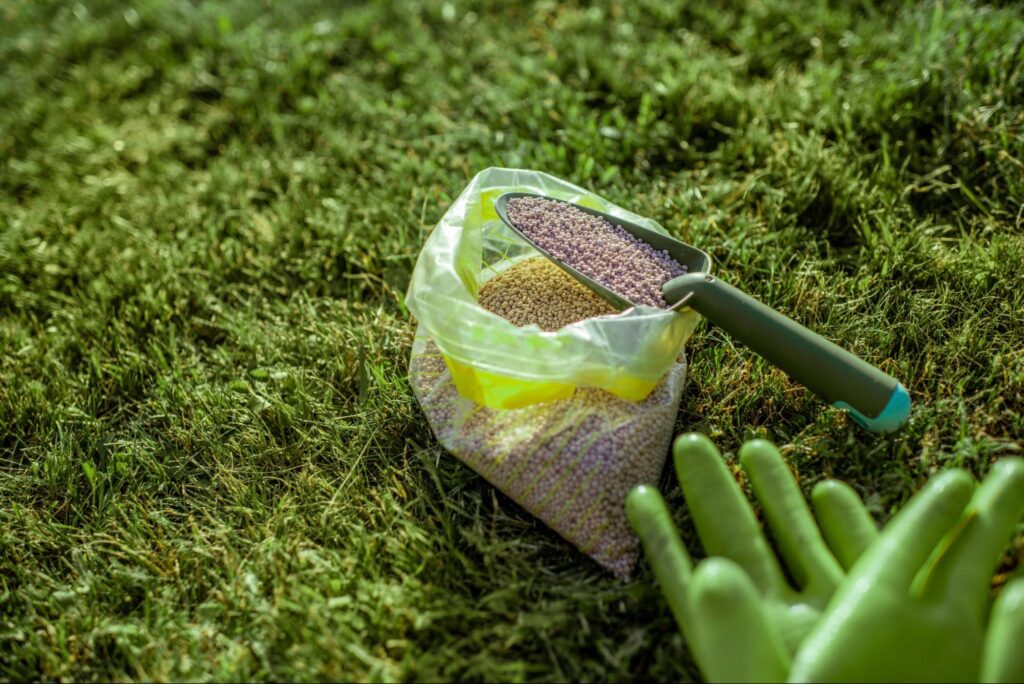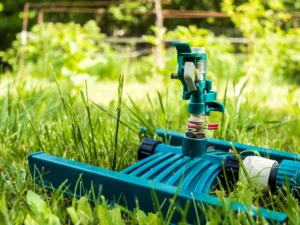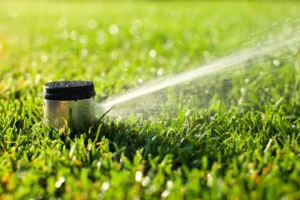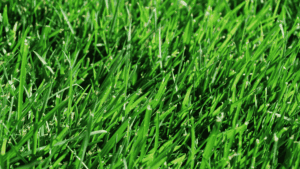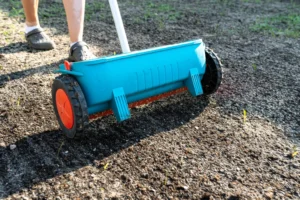To cultivate a lawn that is truly vibrant and resilient, it all begins with a good fertilization program that applies key nutrients exactly when your grass needs them the most. In this extensive guide, we’ll review the basic categories of fertilizer, when to apply them, how to apply them, troubleshoot common lawn issues, and sustainable options for being eco-conscious while giving your lawn the care it deserves, keeping in mind Atlanta’s climate. It does not matter if you prefer the natural and organic way or a convenient time-release approach, by understanding your different types of fertilizers, fertilizer timing, and how to apply your fertilizer, you will be on your way to achieving that lush lawn that is emerald green.
What Are the Different Types of Lawn Fertilizers?
Lawn fertilizers are pre-formulated products that deliver important nutrients (nitrogen (N), phosphorus (P), and potassium (K)) to your turfgrass and make grasses and grass roots stronger, greener, and more resilient to stress. Knowing the differences between organic, synthetic, liquid, and granular fertilizers can help you pick the most suitable choice based on your lawn’s needs and your preference for maintenance.
What Are the Benefits and Drawbacks of Organic vs. Synthetic Fertilizers?
Organic fertilizers work by gradually releasing nutrients through the microbial breakdown of natural materials like compost and manure, which actively promotes healthier soil and supports long-term nutrient cycling. Synthetic fertilizers, on the other hand, offer precise nutrient ratios and are quickly absorbed by the grass, but they can potentially lead to salt buildup and require careful application to prevent runoff.
- Organic fertilizers enhance soil structure and boost beneficial microbial activity, leading to improved drought resistance.
- Synthetic products provide predictable nutrient release rates and consistent N–P–K ratios for reliable results.
- Organic options typically require more frequent applications to maintain optimal nutrient levels in the soil.
- Synthetic formulas can cause “fertilizer burn” if they are misapplied or used on turf that is already stressed by drought.
This comparison highlights how the choice between soil-enriching organics and precisely engineered synthetics significantly influences your lawn’s nutrient delivery and its overall environmental footprint, naturally leading us to explore different application forms.
Organic fertilizers work to revitalize turfgrass by releasing nutrients slowly as beneficial microbes decompose organic matter such as compost and manure. Organic fertilizers not only nourish your turfgrass but also foster a healthy soil structure, which helps build resilience against drought and enhances microbiological activity. Synthetic fertilizers provide specific ratios of nutrients that your grasses quickly uptake, but they may also build up salts in the soil and need to be carefully applied to avoid run-off.
- Organic fertilizers enhance soil structure and stimulate beneficial microbial activity, resulting in a more drought-resistant lawn.
- Synthetic products provide predictable nutrient release curves and stable N–P–K ratios, ensuring dependable results.
- On the other hand, organic products often require more frequent visits to the turf to prevent under-delivery of nutrients to the soil.
- It should also be noted that synthetic formulations can sometimes accidentally cause “fertilizer burn” if they are misapplied, especially to stressed turf that has been affected by drought beforehand.
This illustrates how a choice between soil-enriching organics and precisely engineered synthetics heavily influences the way nutrient delivery and a turf’s overall environmental footprint are manifested, inevitably in discussions of application forms.
How Do Liquid and Granular Fertilizers Differ in Application and Effectiveness?
Liquid fertilizers deliver water-soluble nutrients in a fine spray for rapid absorption through the grass blades (foliar absorption), while granular products release nutrients more slowly from coated or uncoated pellets spread across the lawn’s surface.
| Application Method | Release Speed | Convenience | Typical Use Case |
| Liquid | Rapid (within days) | Requires a sprayer | Quick color boost and early spring feeding |
| Granular | Slow to moderate (over weeks) | Use a spreader or apply by hand | Scheduled maintenance and long-term feeding |
Granular formulations are excellent for providing sustained nutrient availability with fewer applications, and liquid sprays are particularly effective for providing an emergency green-up. Understanding these form factors sets the stage for selecting the right NPK ratio for your lawn.
How Do NPK Ratios Affect Lawn Fertilization?
An NPK ratio communicates the percentage of nitrogen, phosphorus, and potassium in the fertilizer blend to guide our turfgrass through different stages of growth.
- High-nitrogen blends (for example, 24-4-12) are a suitable option for promoting vigorous leaf growth and a vibrant green color.
- Elevated phosphorus levels are beneficial for promoting strong root systems, particularly in new lawns or those with overseeding.
- Increased potassium content helps build the grass’s resilience to stress, disease, and environmental impacts.
When it comes to NPK ratios, it is important to aim for the ratio that is appropriate for “the season,” and in consideration of the type of grass you have, for balanced nutrition and peak performance. If you plan adequately, this will allow you to develop your fertilization schedule.
When Is the Best Time to Fertilize Your Lawn?
Properly timed fertilization is one of the primary factors in enhancing nutrient uptake for your grass, ultimately allowing your lawn to become thicker and more consistently colored. Timing applications for feeding your lawn with specific consideration for warm-season or cool-season
What Is the Seasonal Fertilization Schedule for Warm-Season and Cool-Season Grasses?
For warm-season grasses, such as Bermuda and Zoysia, fertilization applications typically begin in late spring and continue into the summer months.
Cool-season grass: For cool-season varieties, such as Fescue, you will want to feed in early fall and continue into spring.
- Warm-season grasses: On warm-season grasses, the first feeding of the year is typically best in late April, followed by feedings every 6 to 8 weeks until early September.
- Cool-season grasses: Cool-season grasses respond best to feeding in September and November, and a light application in early March is also beneficial.
Following these seasonal guidelines ensures that grass nutrition is available when the roots and shoots of the grass and other plants are most active, which informs the likely best application frequency.
How Often Should You Fertilize Your Lawn for Optimal Growth?
The recommended fertilization frequency, depending on the type of fertilizer and the amount your grass needs, will be somewhere between 3 and 6 times a year.
- Slow-release fertilizer (pelleted fertilizer) should only be applied 3–4 times a year.
- Liquid or quick-release fertilizers should be applied frequently- 6–8 lighter feedings during the active growing season.
- Organic blends can be applied once a month or every other month, depending on what’s accessible at that particular time as a soil improvement.
Creating a routine with feedings allows the lawn to remain green and growing nicely without the risk of overfeeding, and that naturally leads us into an enumeration of soil tests.
How Does Soil Testing Influence Fertilization Timing and Needs?
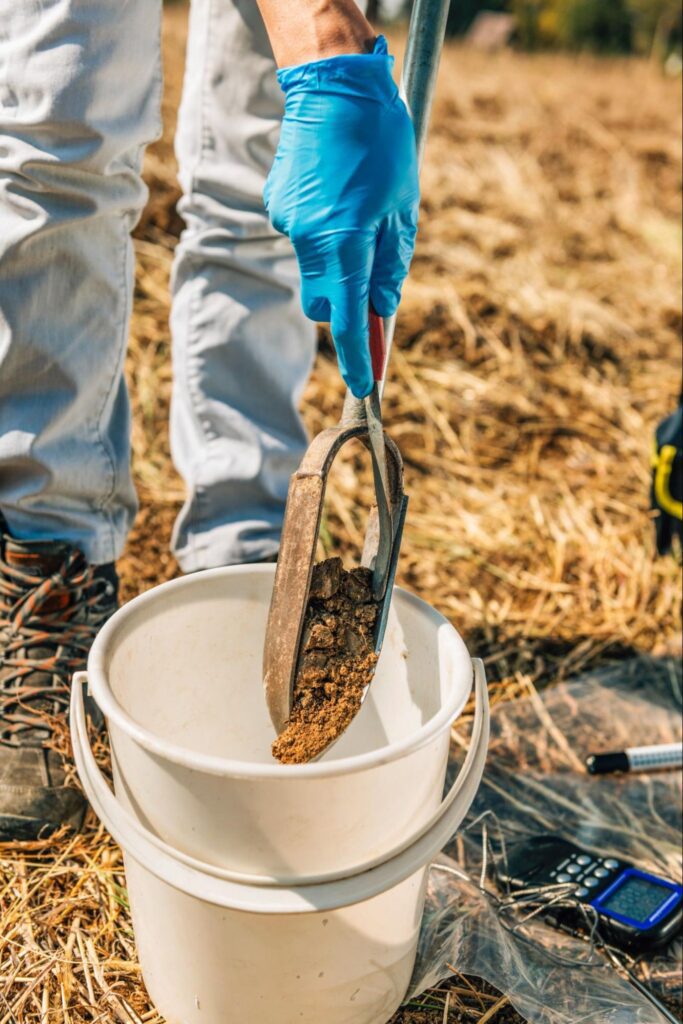
Soil tests are helpful for establishing a pH, testing nutrient levels, and ultimately identifying deficiencies that provide direction toward your fertilizer selection and application timing – all of which impact the products you use and when to utilize them. A soil test conducted prior to the growing season will allow time to adjust the soil pH through the use of lime or sulfur, as well as help determine the exact rate and balance of controlling elements such as N-P-K, which will inform the best course of action to replace or address specific nutrient needs.
How Should You Apply Lawn Fertilizer for Best Results?
Beyond understanding the proper fertilizers and rates that mature grass requires, the act of application —uniform coverage, waste reduction, and avoiding over-fertilizing turf— requires the use of appropriate application tools. Whether you are using a handheld drip spreader or a sprayer, following best application practices can help you distribute nutrients evenly across your entire lawn, ultimately benefiting you.
What Are the Best Practices for Using Granular and Liquid Fertilizers?
For granular application, it is essential to calibrate your spreader rate and overlap your passes to ensure continuous coverage. For liquid, ensure even pressure and clean nozzles.
- Calibrate your spreader according to the instructions on the bag.
- Walk in a uniform, steady pace, apply half the rate in one direction, and the other in a perpendicular direction.
- For liquid feeds, maintain a pressure of 40-50 psi and apply between 20 and 40 gallons per acre.
Accuracy in applications means you will have more uniform turf responses and reduce your chances of unsightly striping or barren patches, allowing you to make informed decisions about machines & methods.
How Does Using a Spreader Improve Fertilizer Distribution?
Mechanical spreaders are designed to distribute granular fertilizer particles uniformly across your lawn, without a narrow feeding width causing heavier applications in high-traffic areas. Setting the drop or broadcast rate of your spreader will give you the desired distribution width and total application rate.
Using this machine offers the same benefits as above, but also provides the potential for fewer missed spots when completing a lawn. You will also typically see less clumping, ensuring uniform nutrition in sprays and preventing common fertilizer mistakes.
Feed Your Lawn Like the Champion It Can Be
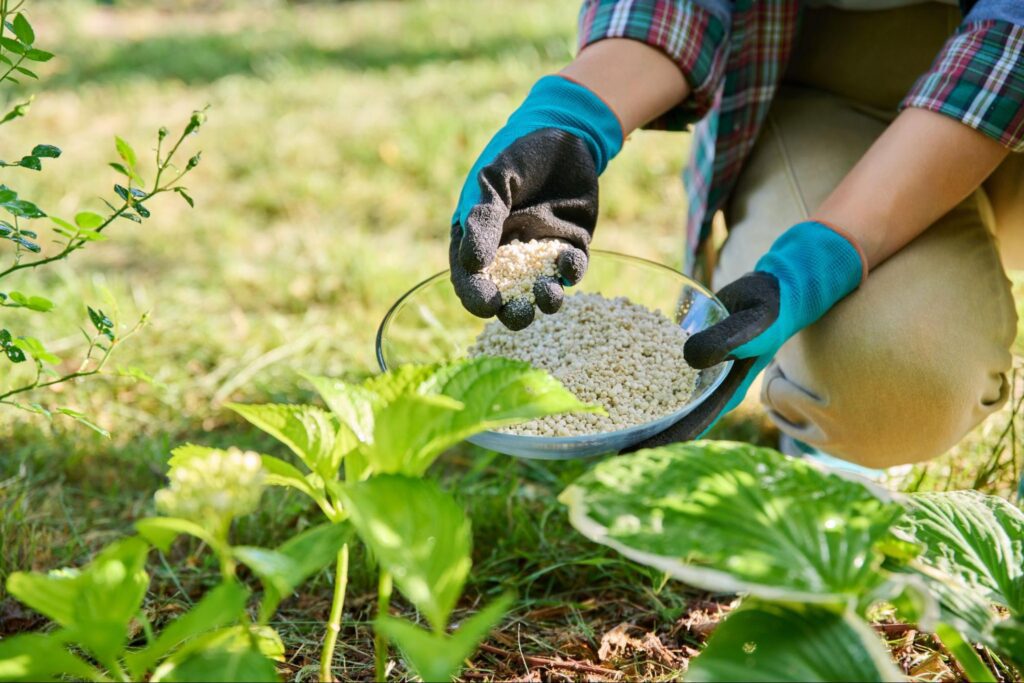
Understanding when and what to feed is the key to a thriving lawn versus a struggling one. Weed Pro custom builds feeding plans based on soil tests, turf type, and your lifestyle and schedule to help you get your grass green without guilt. Are you ready to feed smarter, not harder?
FAQ
How will you know if you’re feeding too much?
Overfeeding often causes rapid growth, thatch buildup, or leaf tip burning. If blades look floppy or brown tips appear, reduce the dose and ramp back up gradually.
Can you fertilize a lawn after it rains?
Wait until grass blades are dry to apply; rain can wash away fertilizer before it’s absorbed. Then, water lightly to activate nutrients.
Up Next:
Want to tackle pests without harsh chemicals? Check out “Tackling Lawn Pests at Home: Natural, Safe Solutions for a Thriving Yard.“

